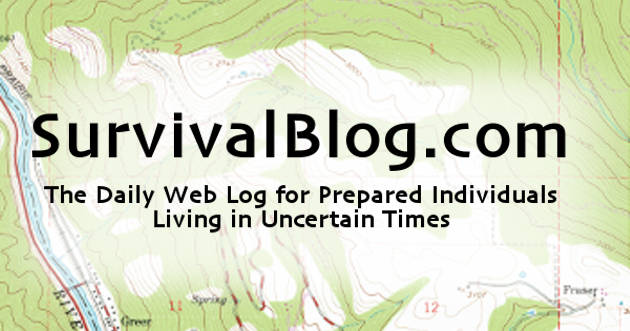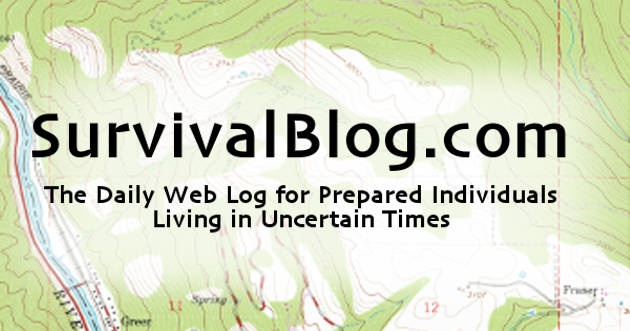Home Insurance 101 – Part 1, by C.J.


Without question, our homestead, retreat, compound, farm, ranch or home is one of our most valuable assets in a TEOTWAWKI scenario. It will be where we hunker down, retreat to and use to protect ourselves from what dangers threaten us. Properly insuring your home and all your survival gear is of great importance. Having insurance to replace what was lost and not having to start over can make all the difference in the world. While insurance certainly isn’t as exciting of a topic as gun reviews, gardening techniques or pretty much everything else we read about on SurvivalBlog, it is as important, and worth having a good working knowledge of what you may need.
We all prepare for the end of the world as we know it, but understanding insurance will help you for “the end of the world as you know it” events we’re all at risk for. Below are my suggestions on what you can do to review your policy as well as understand what coverages you have and might need. I did my best to keep the topics relevant to SurvivalBlog readers and what I anticipate your concerns may be. Please note this is for entertainment purposes only, and you should consult with your specific agent as coverages and laws vary from state to state. Also, please note this is not a complete list of coverages you may need. I simply highlighted some areas I thought might be of particular interest to SurvivalBlog readers.
Dwelling Coverage
This is the coverage that insures the main home. The coverage amount should reflect the price per square foot to build in your area. This can vary greatly based on location, so be sure you understand your local cost to build, and make sure you have a bit more than you may think you need today. As current events in the world can disrupt supply chains, the cost of materials can increase quickly. Many policies will include extended replacement coverage for such scenarios. Be sure you have at least 25% extended replacement coverage. Ideally, 100% extended replacement coverage or guaranteed replacement coverage would be best.
Other Structures
This will most likely pertain to many SurvivalBlog readers. This is the coverage that insures any structure other than the main home. Sheds, shops, barns, stables, fences, etc. are all covered under this coverage. The standard coverage is 10% of the dwelling coverage, which for many people will not be enough. Be sure you adjust this coverage for your specific need.
Personal Property
This is the coverage that covers all your stuff. No doubt, there is going to be a bit of controversy and varying opinions in regards to how to handle this for survival minded folks. All policies will have special sub-limits for categories like jewelry, art, firearms, and collectibles. Many policies will have sub-limits for other categories as well. There are two primary ways to increase the coverage for sub-limited categories. I am going to speak specifically for firearms, as I feel that is what will pertain most to SurvivalBlog readers, but this advice typically will apply to all categories that have a sub-limit. The first way is by increasing the blanket limit. Most policies will have a $1,000 to $2,500 limit for firearms. Many carriers will let you increase this blanket limit to a higher limit. Most carriers will have an overall limit they will let you increase this to. For many of you, this probably won’t be nearly enough coverage regardless. The main benefit of the blanket option is they don’t require a list of firearms and it’s pretty simple to just increase the limit. One drawback to this option is “Loss” is not typically a covered peril. You are strictly covered for the named perils of your policy (Fire, theft, etc.) I fully expect readers to not lose their firearms but it can be much more prevalent with jewelry, so it’s worth mentioning.
The 2nd option is to schedule your firearms on your homeowner’s policy. The advantage to this option is that the limit can be much higher. The absolute disadvantage is they will require a list of your firearms. I suspect the majority of SurvivalBlog readers will not go for that, and understandable so for obvious OPSEC reasons. This option typically does cover loss as a covered peril (see above). With all of this in mind, I typically advise my clients to insure firearms outside of their homeowner’s policy. The coverage limitations from option A and the OPSEC concerns of option B make the homeowners policy a poor choice for insuring firearms. There are many supplement firearms policies out there that have high coverage limits with no intrusive requirements. Buyer beware on these policies. The quality and fine print will vary greatly, and I strongly recommend you go through a reputable carrier. Usually, firearm retailers can recommend carriers they use and have a good history with. Also, many firearm organizations have recommendations as well. A quick note on firearm safes. Many safes are fire-resistant, but not fireproof. Be mindful of what you have, and how these plays into your risk and strategy for protecting your firearms. The quantity, quality and overall value of your collection should in part dictate how you insure them.
Many policies do not have a limit for tools. An exception to this is if the tools are used for business purposes. Some policies do have a tool limit, so be sure to verify what you specifically have for tools. If you do own a business, it is best to cover the tools used for that business on a commercial business policy as most homeowners’ policies will not cover business tools.
With all personal property, it’s a good idea to have an inventory of what you have. Partly, this will help you prove to an adjuster what you owned, but it will also help you remember what you own. Undoubtedly, leaving this to memory will have you shortchanging yourself after a total loss. Again, there will be varying opinions on this, but to what extent you want to document your belongings is up to you. Many of my clients will walk through their home and video every room as a way to document what they have and keep the video to recall after a total loss. OPSEC in this regard is very important, but being able to recall everything you owned is important as well. Use your best judgment on how to best handle this for your situation.
One point to note, if you own anything unique or very high end that most people wouldn’t own, it is a good idea to have proof of ownership. Most claims adjusters won’t question a $700 mountain bike, but they are probably going to want some sort of proof if you claim you had a $10,000 mountain bike. Credit card receipts or simple pictures can go a long way with these items.
Liability Coverage
This is the coverage that protects you from a lawsuit. Someone slips and falls on ice on your property, the dog bites the neighbor kid, your kids damage the neighbor’s property. These are just a few examples of liability issues you may find yourself negligent for. A simple rule of thumb, the more liability coverage the better. You can’t calculate risk when it comes to liability. Whereas you can get a pretty good idea of how much property coverage you may need, you cannot control the amount someone sues you for. Most policies offer $500,000 in liability. Some even go up to $1,000,000. This coverage is inexpensive and I would recommend getting as much as they offer. If you have the need for even more liability coverage, talk to your agent about adding an umbrella policy. An umbrella is simply additional liability coverage that will float over all your underlying policies (auto, home, boat, ATV, etc.). Just be sure all those risks are listed on the umbrella so the umbrella will extend to those policies.
Insurance Trends
Many of us live in areas prone to hail. I strongly recommend you verify your policy has full replacement for the roof. Many policies have moved to Actual Cash Value (depreciation) for roof replacement which payout based on the age of the roof. Also, please be mindful of separate wind and hail deductibles. Your policy can change with every renewal, and many times people will not realize they have a new higher wind and hail deductible. You also want to verify you have ordinance and law (building code) coverage. Building codes can vary greatly from county to county, but understand your policy will pay for what you had pre-loss. If the county building code requires you to have something you did not have before (flashing on roof, aluminum to copper wiring) you will need ordinance and law coverage to cover this.
(To be concluded tomorrow, in Part 2.)
